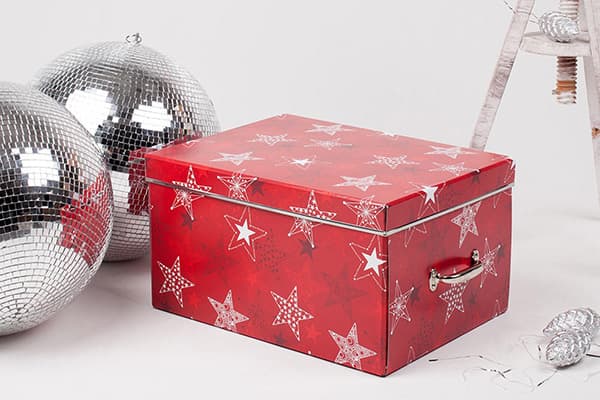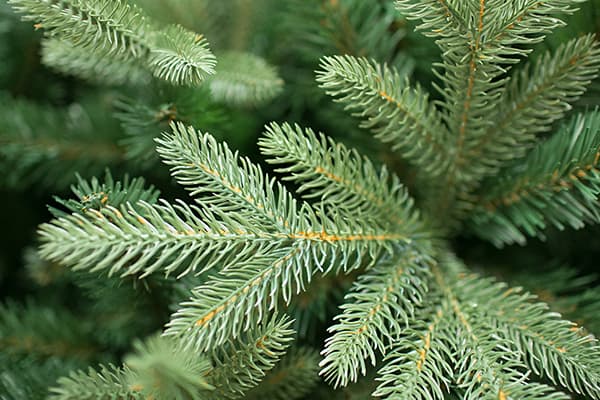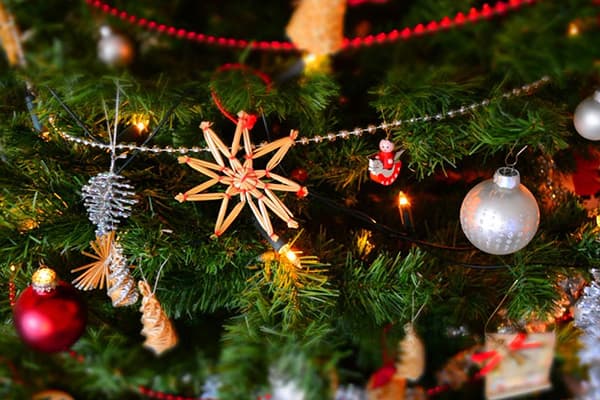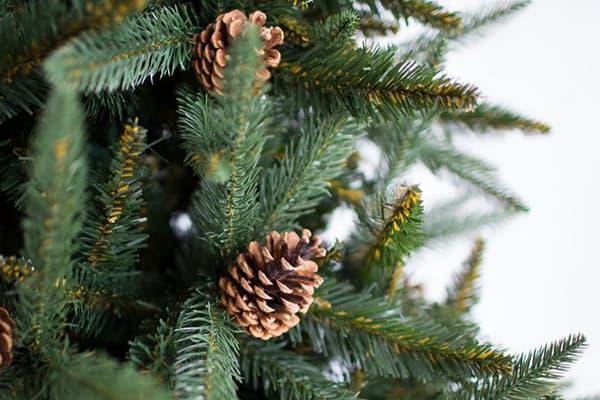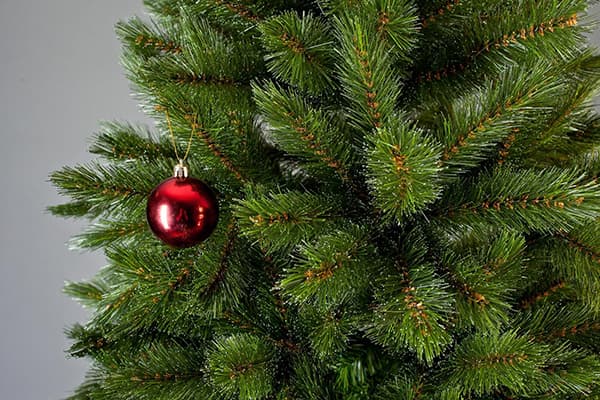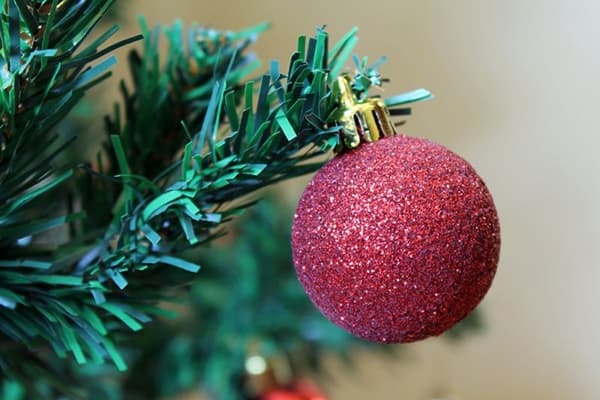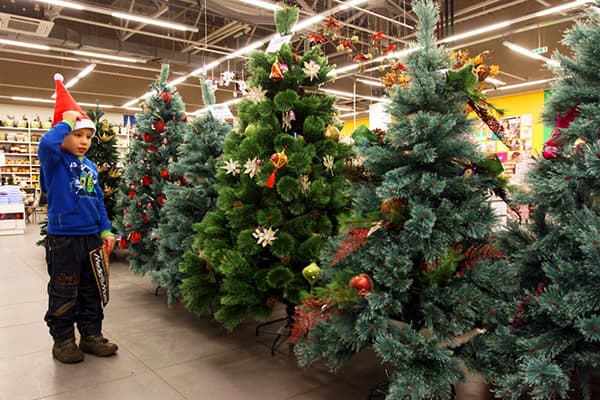To be better than a real one, how to choose an artificial Christmas tree?
What would a New Year's holiday be without an elegant forest beauty? Christmas trees and pine trees come in a huge assortment during the New Year's period. But today, more and more consumers are inclined to purchase artificial Christmas trees: they will last a long time, and there is no litter from them, and there is no need to care for such trees - they will stand dressed up in their original form for as long as we want. And the “needles” will not cause their allergies. But among the endless variety, choosing an artificial Christmas tree is not so easy: it’s easy to get confused when you see so many different models in front of you. Which one will be the most suitable?
Before going to the store
When going for an important purchase, some nuances need to be clarified at home in order to know exactly what to look for.
- Decide where you plan to put the tree. Its size, width and, accordingly, variety will depend on this. For example, pines and firs are usually more spreading than spruces (regular or blue), they require more space, even if their height is not great. It is better to place a tall, lush Christmas tree in the center of the room, and more compact options are suitable for a corner, bedside table or chest of drawers.
- Select a variety to search only among pines or only among firs.
- Give up fashionable or designer models of Christmas trees that will be out of date or will begin to irritate with their catchiness in just a year or two.These could be, for example, upside down Christmas trees, pink or purple, assembled from Christmas balls or garlands, generously decorated with red or gold toys, huge roses, and feathers. Remember that you are making a purchase for many years to come, so the tree should be beyond fashion and a specific style. Stick with the classics.
- Decide whether your Christmas tree will be covered in “snow”, “frost”, pine cones, nuts, with or without lighting. This will also make it easier to choose directly in the store.
- If you have small children, keep in mind that the needles on your future purchase should not be prickly.
- If the Christmas tree is just a small additional element of the overall New Year's decor, it can be white, red, or gold.
Measure the height of the ceilings and the diameter of the space the tree can occupy without taking up too much space from the room. This way you won’t go wrong with the size of your artificial Christmas tree. And this is an important point, considering that this particular tree will stand in this place for many winters in a row.
Choosing material
Artificial Christmas trees are made from different materials. Their appearance, degree of decorativeness and price depend on this.
-
- Cast. Such Christmas trees are made from plastic (polypropylene, liquid plastic) using casting. Each branch is cast separately, so making them is quite expensive, which affects the price. Such trees are most similar to natural ones. Their needles are short in length (since the material for their manufacture is very heavy) and very soft - it is impossible to get hurt on it, which is important for a house in which small children live. In addition, the heavy weight gives the entire structure additional stability.
-
- Polyvinyl chloride (PVC). Christmas trees made from PVC film are also quite attractive.They are made from a thin strip cut into narrow needles, which are then assembled onto a metal base.
-
- Combined. These Christmas trees are made of PVC and plastic. Their branches have a rather heterogeneous structure and look very elegant.
-
- From fishing line. The fishing line is used to make needles. These models are very fluffy and have a wide range of colors. Pine trees made from fishing line, if the color is chosen naturally, are extremely similar to real ones. But they have a significant drawback - they are prickly.
-
- Paper. The paper for them is impregnated with a special compound, making it very durable and elastic. These trees are the lowest quality and cheapest. They do not last long, wrinkle easily and catch fire at the slightest opportunity - sometimes even from an ordinary electric garland.
What else is important when choosing?
When choosing an artificial Christmas tree, you cannot miss a single detail. After all, in the end, any nuance can spoil the purchase impression if “something goes wrong” during operation.
- Stand.
The larger the tree itself, the less flimsy it should be. For small Christmas trees, a plastic one is also quite suitable. The main thing is that it is smooth, strong and stable. It is preferable to purchase large Christmas trees that will be decorated with many toys with wooden or metal stands, which should also be level and stable.
- Overall quality.
We pay attention to how securely the branches are attached, whether they are elastic (otherwise they will not hold toys), how tightly the needles sit, and whether they wrinkle. Nothing should crumble or fall off the tree, and the wire that holds the needles should not stick out, be scratched, or have bare areas.The color of the needles and trunk of the Christmas tree should be stable and uniform.
A high-quality product does not emit any chemical odors. This is easiest to check if the Christmas tree is bought indoors and not outdoors. If the model has permanent decorations, the glue in the places where they are attached should not be visible.
- Safety.
The seller is obliged, at the buyer's request, to provide certificates of quality and safety of the goods confirming that they will not harm the health of people or animals. It is also very good if the tree has fireproof impregnation. Garlands can be hung on it without fear.
Choosing an artificial Christmas tree is not so easy. A purchase that will please everyone at home for many years must meet many requirements. Therefore, this issue cannot be approached lightly. After all, nothing should darken the New Year's mood.
